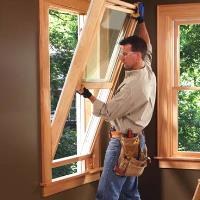(BRUSSELS) – The EU presidency secured provisional agreement with the European Parliament on new rules on the energy performance of buildings Tuesday, with final approval expected at the start of next year.
The directive encourages energy efficiency and will increase energy savings in the building sector. It brings the existing rules up to date by taking into account recent technological developments.
The building sector in the EU is the largest single energy consumer in Europe, absorbing 40% of final energy, and about 75% of buildings are energy inefficient. Likewise, and depending on the Member State, only 0.4-1.2% of the stock is renovated each year.
The European Commission welcomed the agreement, which it said opened a vast potential for energy efficiency gains in Europe as well as economic opportunities – the construction industry generates about 9% of European GDP and accounts for 18 million direct jobs.
“The fight against climate change starts ‘at home’, given that over a third of EU’s emissions is produced by buildings,” said EC vice-president Maros Sefcovic: ” By renovating and making them smart, we are catching several birds with one stone the energy bills, people’s health, and the environment. And as technology has blurred the distinction between sectors, we are also establishing a link between buildings and e-mobility infrastructure, and helping stabilize the electricity grid.”
Construction activities that include renovation work and energy retrofits add almost twice as much value as the construction of new buildings, and SMEs contribute more than 70% of the value added in the EU building sector.The new simplified framework will cover the speed, quality and effectiveness of building renovation, with the long-term aim of moving to the decarbonisation of buildings.
As a result, the energy consumption of buildings in the EU, which currently accounts for 40% of total energy, will decrease, contributing significantly to reaching the EU’s 2020 and 2030 energy efficiency targets.
Member states are now required to establish long-term renovation strategies to focus building renovation investment on highly energy efficient and decarbonised building stock by 2050. To guide investment decisions, member states will have to pay particular attention to mechanisms aimed at involving SMEs, target the worst-performing building stock and reduce the perceived risks of energy efficiency operations for investors.
A new feature compared to the existing regulation is that the revised directive promotes electro-mobility by setting minimum requirements in buildings with more than ten parking spaces to roll out recharging points for electric cars. In new non-residential buildings and non-residential building undergoing major renovations, the installation of at least one recharging point, and ducting infrastructure to enable the installation of recharging points for electric vehicles, will be required for at least one in every five parking space.
Member states will set up the requirements for the installation of a minimum number of recharging points to all non-residential buildings with more than twenty parking spaces by 2025.
A voluntary Smart Readiness Indicator will be developed by the Commission to assess the readiness of buildings to adapt their operation to the needs of the occupants.
The revised directive will clarify the setup of energy performance databases, should member states decide to voluntarily use them. Data collection will be limited to public buildings for which an energy performance certificate has been issued and data protection will be ensured by making anonymised data available solely for research purposes and to the building owner.
Inspections of heating and air conditioning systems in buildings are simplified. The new legislation recognises member states’ competence to establish the appropriate inspection measures and the frequency of inspections. The uniform threshold for all inspections will be 70 kW. In addition, a feasibility study would be carried out to possibly introduce inspections for stand-alone ventilation systems. In order to simplify the process of increasing energy efficiency and rationalise the costs of inspections, effective alternatives can be put in place, such as advice.
Buildings would be required to be equipped with automation and control systems by 2025 only when considered technically and economically feasible.


